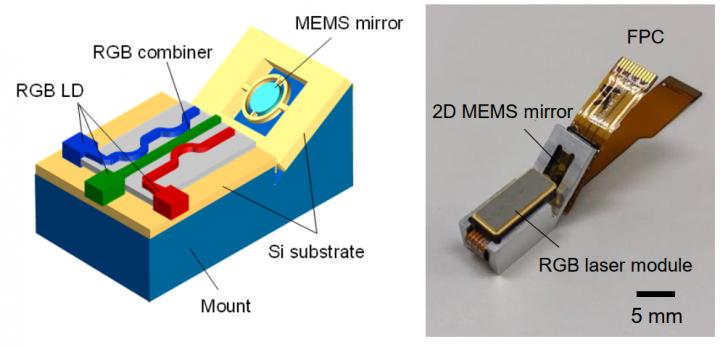
Underpinning the technology is an optical engine that integrates an 8×4×3 mm RGB (Red, Green, Blue) laser module with a microelectromechanical (MEMS) mirror.
The direction in which the MEMS mirror reflects light from the laser module can be controlled electronically, making it possible to project high-quality 2D images through laser scanning over the projected area.
Developed at the University of Fukui in collaboration with Seiren KST, the work was recently presented at the 27th International Display Workshop and could be commercialised within a year, according to its creators.
Gas permeable electronic material adds comfort to wearables
"At the University of Fukui, we are trying to stir things up in the wearable display industry by developing smart glasses with optical engine, driver circuit, projector, and battery all integrated in one single device,” said the university’s Asst Prof Akira Nakao, lead author of the study.
One of the biggest challenges for the team was combining the separate RGB laser sources to deliver a coherent full colour output. This was achieved using a waveguide-type combiner, where each of the three waveguides receives light from each of the primary colours. The central green waveguide is the only one connected to the output, but the red and blue light is mixed with it at strategically chosen points to deliver a full colour projection.
"The measured efficiency of the combiner was as high as 97 per cent, which represents a loss of only 0.13dB," Nakao said in a statement.
"The outputs from the individual RGB lasers end up perfectly aligned thanks to the nature of the waveguide-type combiner.”
The device is capable of projecting 1280×720 colour video by tuning the MEMS driving frequency, making it a potentially ground-breaking technology for wearable devices such as smart glasses as well as HUD systems for driver assistance. Further tuning will be required to make it possible to safely project images directly onto the human retina, although this is something the team is actively working on.
"For now, our unit can be used in laser microscopes, sensors, projectors, and HUD displays, particularly those for novel automobile systems with intelligent driving technology, which are all set to reshape our future,” said Nakao.





Swiss geoengineering start-up targets methane removal
No mention whatsoever about the effect of increased methane levels/iron chloride in the ocean on the pH and chemical properties of the ocean - are we...